The comma butterfly (scientific name Polygonia c-album) is a common and widespread butterfly of the Nymphalidae family. It is also known as the comma, black comma butterfly, or simply comma, which it takes from its distinctive appearance.
There are many variations of this species, and they have been divided into subspecies (meaning that they vary in colour).
Comma Butterfly Identification
The comma butterfly has distinctively ragged wing edges with dark brown spots, and when at rest with its wings closed, looks just like a dead leaf. You’ll also notice at this point comma shaped white spots on the underside of its wings.
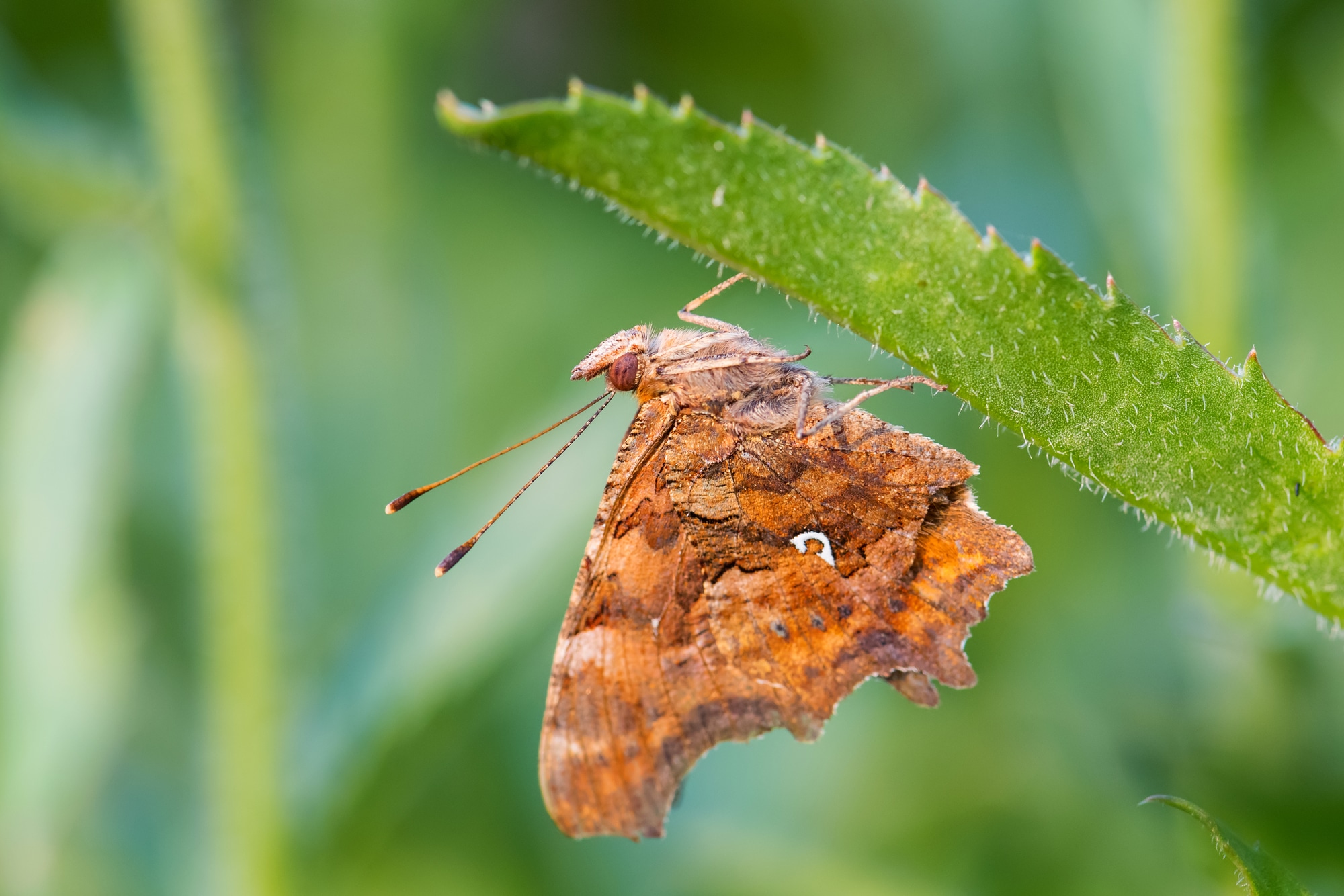
On the upper side, they mostly have bright orange wings with brown markings on each fore wing which resembles a comma, hence the name. Some forms also display white markings around the edges.

Males have an orange patch, and females tend to have cryptic brown colouring and small patches in this area. Although some female comma butterflies resemble males, they lack the orange colour of the male.
In terms of size, comma butterflies are considered to be medium-sized, with an approximate wingspan of up to 50 mm.
Different Forms and Aberrations Of The Comma
Comma butterflies have been split into various forms and subspecies based on their appearance. There are several different aberrations of the comma butterfly including the form hutchinsoni, albanian, common, costal-banded, edwardsi, jutlandic, macedonica, marshalli and noktsevica.
The ‘noktsevica’ is a form that has no spots present on its wings at all. This could be due to genetic mutation, or it could be that they were just recently given this name due to not having any spots when first discovered. Also, another theory is that these butterflies had become so developed they had lost the need for the pattern altogether.
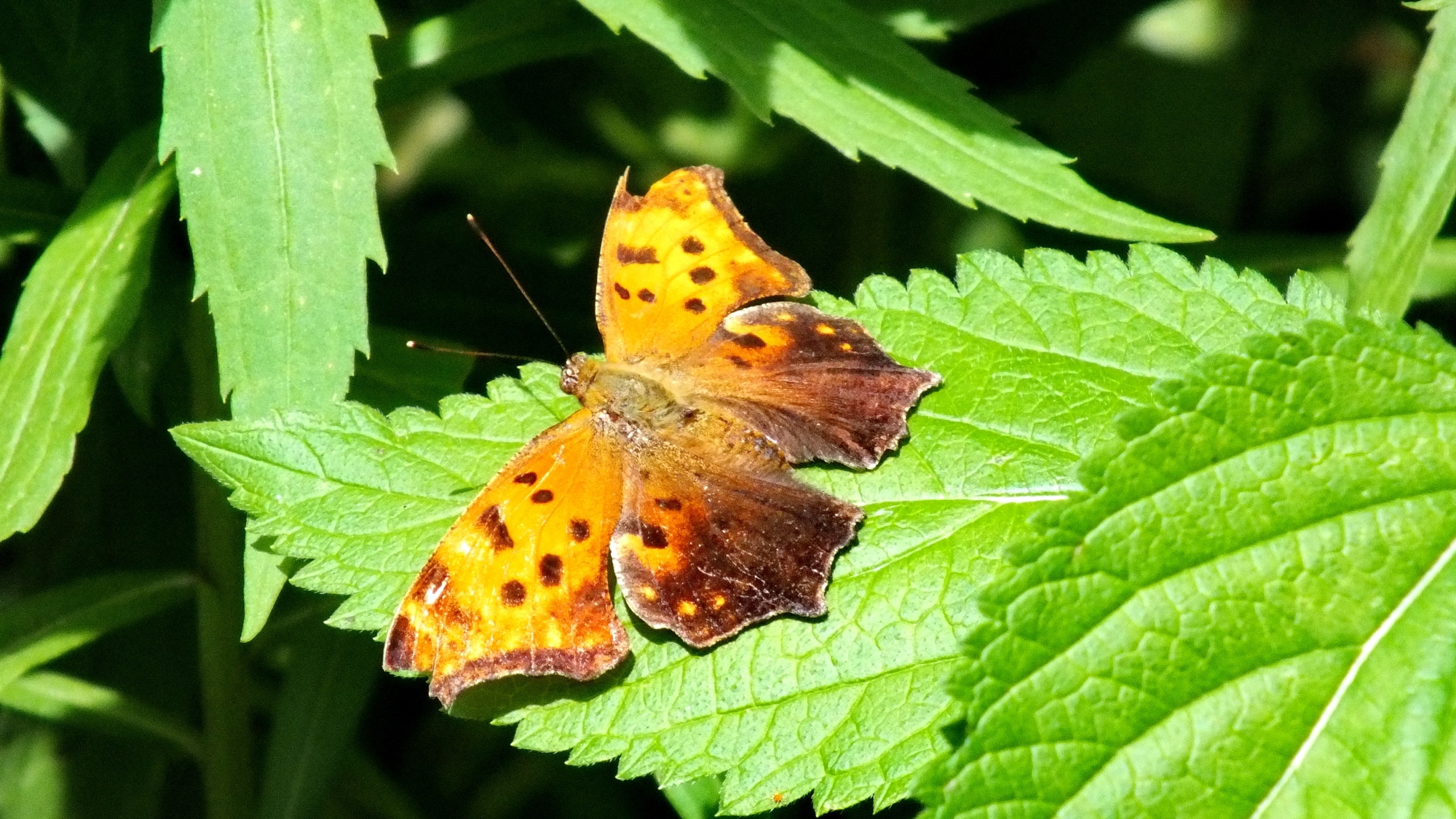
What Do Comma Butterflies Eat?
Comma butterflies feed on a wide range of plants such as clovers, thistles and violets. You’ll often see them feeding nectar sources or fallen fruit such as apples and plums in urban gardens in late summer.
Where Do Comma Butterflies Live?
The comma butterfly can be found in many different habitats, as its colouring makes it inconspicuous to predators, so it can easily camouflage itself amongst other plants. It is normally seen flying along woodland edges or drinking from puddles during hot weather in forests where they like to flutter around trees.
In forestry areas such as these, the comma can be found feeding off birch trees for their sweet sap because it has lots of nutrients. This makes them one of the most common UK butterflies in woodland habitats, where most other similar insects do not thrive.
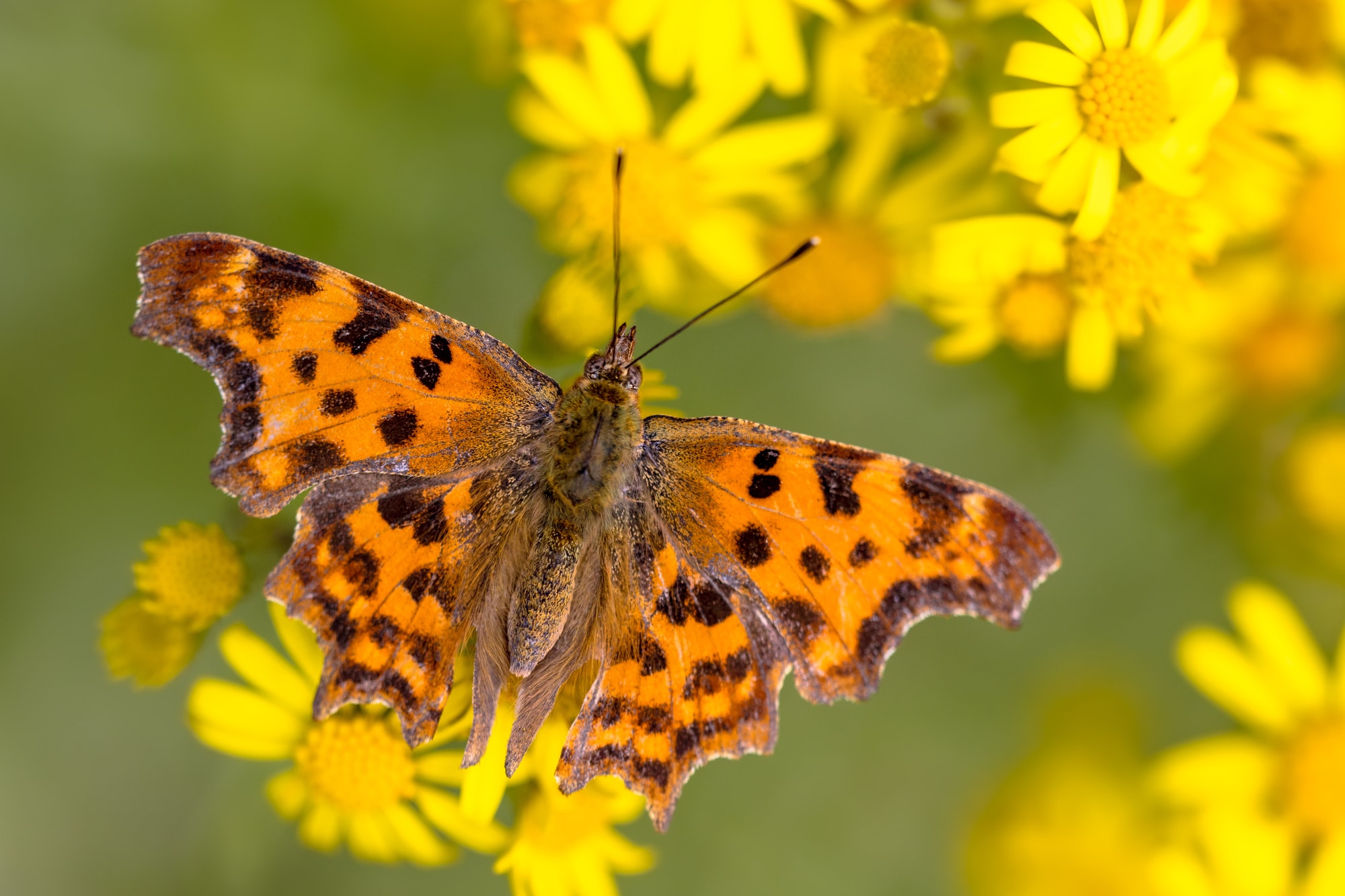
Comma Distribution
Catching up to the common blue, the comma butterfly is one of the most widely distributed of all the UK butterflies. It can be spotted in almost every county throughout England and Wales, parts of Southern Scotland, and Ireland. The comma prefers woodland edges but due to its inconspicuous colouring, it usually goes unnoticed in any other habitats such as meadows and gardens.
Comma Butterfly Life Cycle
The comma butterfly has a life cycle consisting of three stages: egg, larva and adult, which lasts for approximately 2 weeks (depending on weather conditions). The eggs hatch into larvae which then pupate before emerging as adults – the whole process taking around 7-8.5 days depending on temperature.
Conservation Status
Commas are one of the few species that have adapted themselves well to human habitat development. The comma butterfly is not currently endangered, but it does suffer from habitat loss, and the use of pesticides on farmland is harmful.
Therefore, it is important to create an environment for them to inhabit by protecting their natural habitats and planting more wildflowers.
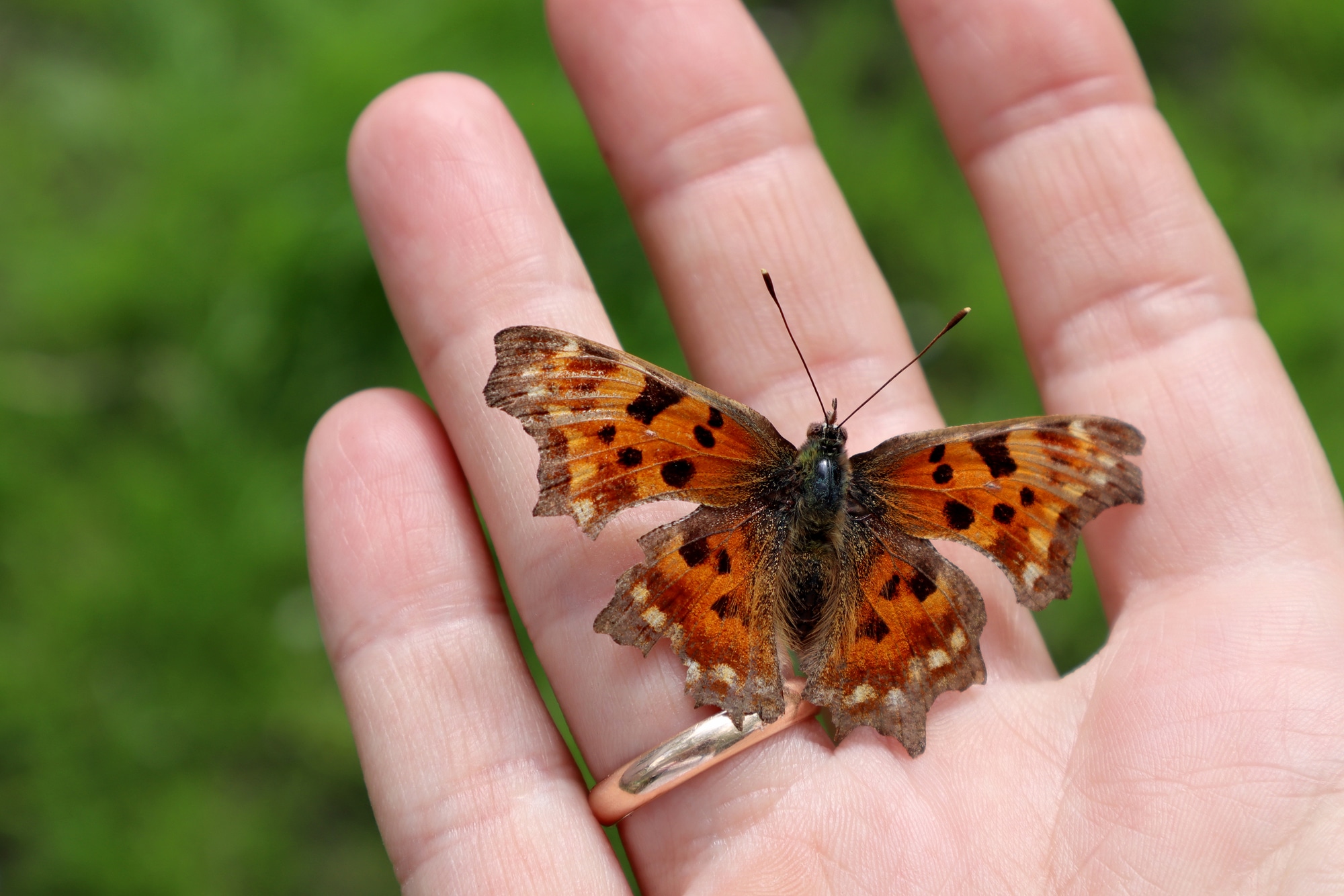
The Comma Caterpillar
The comma caterpillar (also known as Polygonia c-album) is the larval stage of the butterfly. During the early summer months, adult commas lay their eggs on different types of trees, such as birch or hazel, which they choose for their large leaves that provide protection for their caterpillars from predators.
As soon as these hatch, small black comma butterfly caterpillars emerge. The comma caterpillar has brown and white flecks and sometimes resemble bird droppings, but often looks orange-brown with pale yellow stripes along its body and orange spots down each side of its body. Its head is red/orange/yellow.
The comma caterpillar is commonly found on the meadowsweet plant, from where its food source can be obtained by chewing the leaves. This species is not usually harmful to man. Still, if disturbed, it may bite, so avoid contact with this insect because caterpillars have hairs that produce a substance that causes an itch or rash in people prone to these allergic reactions.
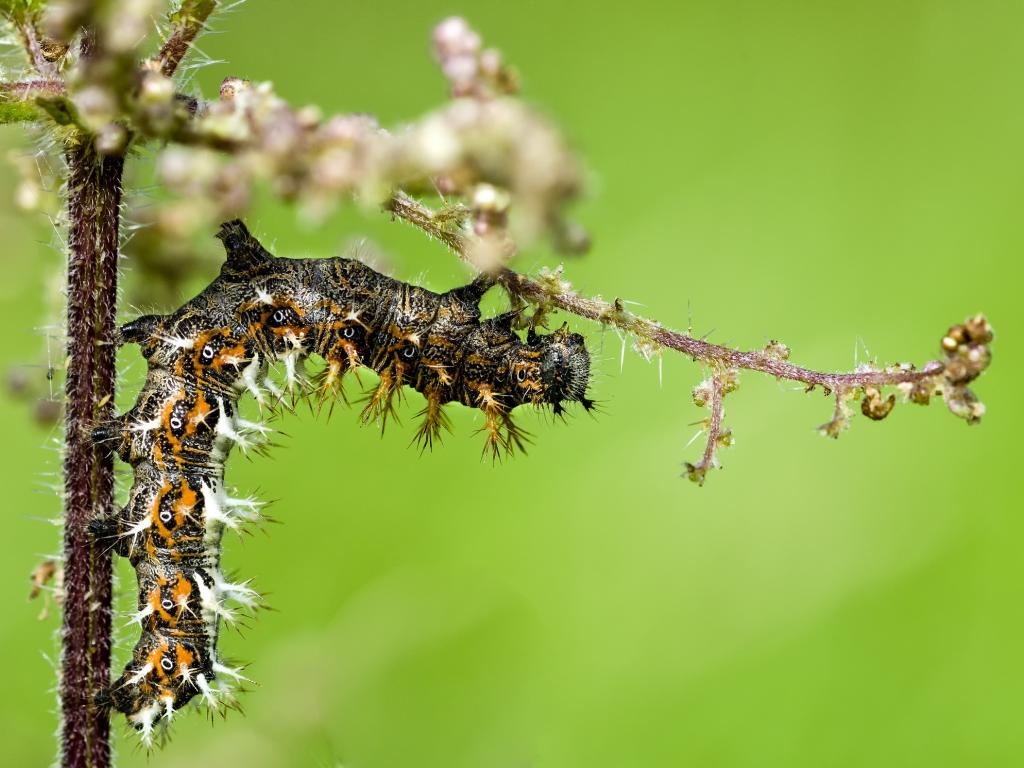
What Do Comma Caterpillars Eat?
Comma caterpillars feed on many kinds of plants, especially grasses and various trees, including ferns and rosebay willowherb. The main food source is the common nettle and hops but has also been spotted feeding on elms and currants.
Sources and References
- Comma (Polygonia c-album) – butterfly-conservation.org
- Comma – naturespot.org.uk
Sam loves to learn about animals and their habitats. He has been a nature lover from a very young age, and has been writing papers and articles about wildlife for as long as he can remember.

I saw and photographed a Comma butterfly in my garden this afternoon, very excited as it is the first time that I have seen one on Speyside.
I live in Co. Meath in Ireland in a predominantly rural area. This year is the first time I’ve spotted a Comma. I’m absolutely delighted.
I live in Canada and am pleased to say I have a comma overwintering in my garage. We believe it came in with firewood we recently brought in to our heated garage. I have put it in an enclosure to overwinter where it won’t be apt to tangle itself in spider webs and injure itself. I am hoping it will survive there so I can release it in the spring. I noticed that it is more active depending on the temperature in the garage. We are heading into November here and the climate has been quite mild so far.